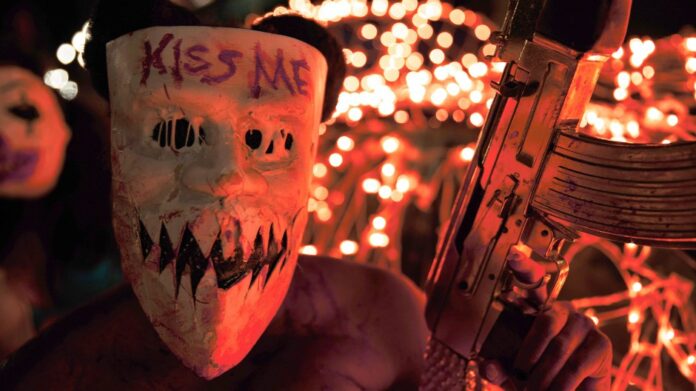
LOS ANGELES — More than a dozen Los Angeles gangs are targeting some of the city’s wealthiest residents in a new and aggressive manner, sending out crews in multiple cars to find, follow and rob people driving high-end vehicles or wearing expensive jewelry, according to police.
In many cases, they’re making off with designer handbags, diamond-studded watches and other items worth tens of thousands of dollars — if not more — and then peddling them to black-market buyers who are willing to turn a blind eye to the underlying violence, police said.
In some cases, suspects have been arrested but then released from custody — only to commit additional robberies, police said.

Those are among the conclusions of a Los Angeles Police Department task force convened at the end of last year to identify the cause of a sudden surge in “follow-home,” or “follow-off,” robberies, so called because victims are robbed soon after leaving luxury boutiques and hotels, ritzy restaurants, trendy nightclubs and other locations where the gangs are scouting for targets.
According to Capt. Jonathan Tippet, who spearheads the task force, police have identified at least 17 gangs, most based out of South L.A. and operating independently, that are involved. There were 165 such robberies in 2021 and 56 so far this year, he said, including several over the weekend.

The area with the most robberies during that time was the LAPD’s Hollywood Division, with 50, followed by 46 in the Wilshire Division and 40 in the Central Division, which includes downtown. The Pacific Division had 17, West L.A. 15, North Hollywood 14 and Topanga 11.
Tippet did not say how many robberies police attributed to which gangs, but said individuals allegedly affiliated with both the Bloods and Crips have been identified among the culprits. Suspects who police have identified have pleaded not guilty, and their cases are pending. The task force is still working to build cases against other suspects.
Through surveillance video and other evidence, police have identified crews rolling three to five cars deep in some of the attacks, Tippet said, with gang members jumping out and blindsiding victims.

“There’s no chance or opportunity for these victims even to comply. They’re just running up to people and attacking them, whether that’s putting a gun in their face or punching them and beating on them,” Tippet said. “Pistol whipping them as well.”
Shots have been fired in 23 cases, and two victims have been killed, said Tippet, who also heads the LAPD’s Robbery-Homicide Division, which investigates high-profile crimes.
“In my 34 years on the job, I’ve never seen anything like this,” he said.
The trend, in a city known for opulence as well as extreme poverty, comes at a time when crime overall is under a microscope — with homicides, shootings and armed robberies all at elevated levels since the start of the COVID-19 pandemic and candidates in the city’s ongoing mayoral race denouncing those increases as they vie for voters and wealthy donors.
That intense focus has also caused some consternation among activists and criminal justice reform advocates, who worry that wealthy residents with political clout and politicians eager to please them will use the trend — based in part on fraught and sometimes false police assessments of gang involvement — to claw back past policing reforms.
One prominent activist, Hamid Khan, on Tuesday accused the LAPD of “week after week of sensationalism” about crime in the city, suggesting police were blowing crime trends out of proportion to maintain their grip on the city’s budget.
“LAPD has to constantly legitimize itself, constantly has to make itself useful to the community, by raising this specter of people running wild,” Khan said.
Police said their intent is simply to draw attention to — and halt — a serious and potentially deadly surge in armed robberies.
Still, much of the increasing violence has affected not the wealthy, but the city’s more vulnerable populations, such as people who are homeless or live in poor communities, and receives little notice.
The follow-off robberies first started gaining attention toward the end of last year, when the number of incidents spiked dramatically and celebrities started to fall victim — including actor and former BET host Terrence Jenkins and “Real Housewives of Beverly Hills” star Dorit Kemsley.
In a four-week period from September to October, there were 45 follow-off robberies. In November, there were another 39, Tippet said.
LAPD Chief Michel Moore announced the formation of the task force that month. Tippet was set to brief the civilian Police Commission on the task force’s work since then on Tuesday.
In an interview with the Los Angeles Times, Tippet said that work — and particularly the arrests of some of the alleged gang members — has made a substantial difference, driving down the number of incidents to just 10 in March.
However, the trend is still a major concern, he said, in part because those same suspects keep getting released from jail and reoffending while awaiting trial.
“I am absolutely frustrated,” he said.
Similar frustration was shared last week by Moore, when he took the unusual step of briefing the Police Commission on the alleged actions of one such suspect: 18-year-old Matthew Adams.




